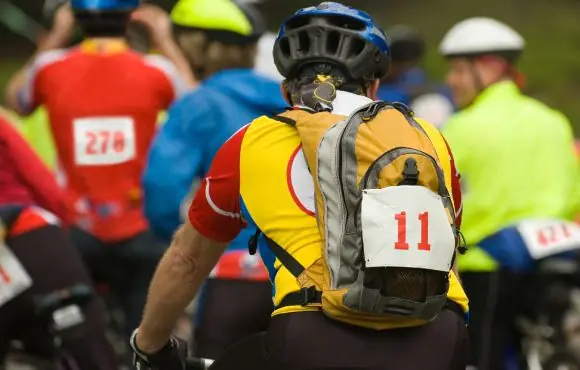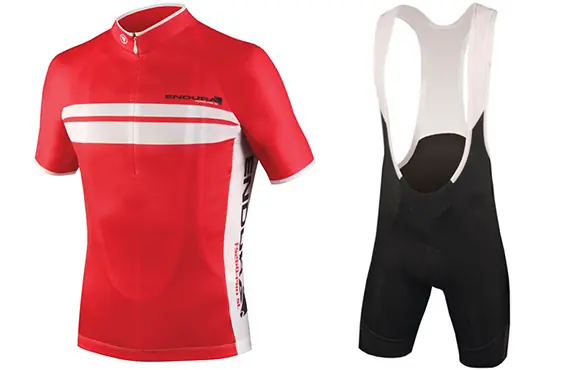It's no coincidence that most experienced bike racers have a routine they go through before every race. Whether you're rubbing a rabbit's foot or performing a series of stretches, routines help you focus and stay calm as you prepare for the stressful events of a race. Some routines, like solid warm-ups, are critical to your performance on the bike. Others, like the ritualistic rubbing of the rabbit's foot mentioned above, are rooted in myth and superstition, and their effectiveness directly relates to the confidence they give you.
While these rituals are helpful and, at the very least, do you no harm, there are some pre-race preparations and rituals that can be detrimental to a competing cyclist. Below, we list five commonly employed routines that have no basis in science or fact.Myth #1: Maximize Your Tire Pressure
1 of 6
The practice of inflating your tires to the absolute maximum to seek out the least amount of rolling resistance possible is, of course, an erroneous exercise. At a bike race, it's not uncommon to hear the gunshot sound of an exploded tire at the starting line or in the parking lot. We could attribute some of this to worn tires, but many times a racer will nervously pump a few too many strokes into his tire before it fails. The result is disastrous as the rider usually cannot repair the tire or get a replacement in time to start.
In reality, an over-inflated tire makes your ride less efficient on many surfaces. Hard tires contribute to a whole-bike vibration. Studies have shown that tires that conform slightly to the rough surface of a road are more efficient and comfortable to ride. Also, hard tires have a smaller contact area with the road and don't corner as well. If you're using 25 mm tires like most racers these days, 90 to 100 PSI is plenty.
Find
Cycling EventsMyth #2: Starting at the Front is Necessary to Win
2 of 6
How many times have your teammates told you to get to the front of the starting line? That's not to say that starting at the front and staying there is a bad thing, but it's simply not true that you cannot win a road event if you don't start at the front. While the back-end of any race is more dangerous and makes it difficult to negotiate turns, there are plenty of opportunities to move up in the first few minutes of most races. If you're racing a road event, don't let your placement at the starting line be a factor in your game plan because, chances are, it won't affect your end position.
One clear exception is modern cyclocross races with extremely narrow and twisting courses. In these races, officials stage (call-up) the higher ranked riders to the front, which often contributes to the success of the front-line riders.
Find
Cycling EventsMyth #3: Pre-Race Super Hydration
3 of 6
Similar to the "Drink before you're thirsty" mantra of years past, this myth contends if you super saturate your body with fluids before your race, you won't dehydrate as quickly. Science withstanding, common sense also proves this to be completely false. Unlike camels, humans lack a natural capacity to store water — other than in our stomachs. When you drink more than you need, your body naturally begins to eliminate it through urination. Starting a race with an urgent need to urinate isn't the best way to win an event. Unlike the Tour de France, your competitors won't be keen on stopping the race for a "natural break" either. Instead, be sure to consume adequate water and electrolytes during and after your event.
Find
Cycling EventsMyth #4: Wrinkled or Glued Race Numbers
4 of 6
Both of these practices have their roots in reducing drag or air resistance. The thought is this: If you roughen your race number or make it flush to your body, the airstream will flow more easily around you. Like a golf ball with dimples, you will fly through the air more easily with a ruffled number than a floppy, smooth one. In reality, there is no proof this is true. A wildly flapping number is more of an annoyance than a true aerodynamic hindrance.
The glued-on number takes the approach that a number flush with a jersey or skinsuit offers less air resistance than one attached with traditional safety pins. While this method might provide a very slight reduction in drag, the benefit will be miniscule and undetectable. You would likely get better results by shaving your arm hair!
There are two drawbacks to these approaches. First the glue used to attach numbers must be washed out with something stronger than soap — this is hard on your kit and it may lose some sponsor printing in the process. Second, USAC officials have started cracking down on riders with extremely wrinkled numbers because they are difficult to read at the finish line.
Find
Cycling EventsMyth #5: Race Day Carbo-Loading
5 of 6
Similar to the myth of race day hydration, the act of carbo-loading before your race is a non-starter. That is not to say that eating a good breakfast with adequate carbohydrates isn't good, but if you've waited until the morning of the race to top off your muscle glycogen, you're too late. Your body won't have time to convert the carbohydrates to glycogen to store in the muscles. If you're lucky, it will convert to sugars and go straight into your bloodstream. That's not a bad thing, but if you eat too much the morning of the race, you may find yourself with an upset stomach.







Discuss This Article